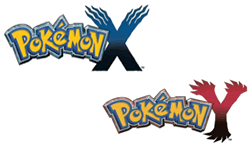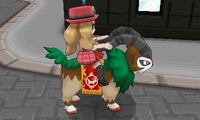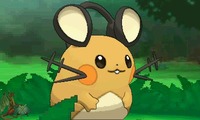|
|

|
PLATFORM
|
3DS
|
BATTLE SYSTEM
|

|
INTERACTION
|

|
ORIGINALITY
|

|
STORY
|

|
MUSIC & SOUND
|

|
VISUALS
|

|
CHALLENGE
|
Very Easy
|
COMPLETION TIME
|
40-60 Hours
|
|
OVERALL

|
+ Upgrade to 3D visuals looks fantastic
+ Wide array of terrific new features
+ Enormous regional pokédex
- Not very many new pokémon
- Too easy
- Poor pacing in the first half of the game
|
Click here for scoring definitions
|
|
|
With the arrival of a new Nintendo handheld, there is one thing we can always be sure of: a new Pokémon game can't be far behind. Pokémon Y and its counterpart, Pokémon X, mark the arrival of the series on the 3DS (if you don't count Pokémon Mystery Dungeon) as well as the beginning of the sixth generation of Pokémon games. And even though each entry to the series features new mechanics and a variety of helpful enhancements to the well-worn formula, Pokémon Y is by far the most ambitious title to date.
Set in the new Kalos region, generation six is loosely based on modern France, and begins in much the same way as all Pokémon games do, but with a twist. Rather than beginning the game by meeting a pokémon professor, players begin as the new kid in a small town who meets up with his new neighbors, who then provide him with his very first pokémon. Players not only get a rival to compete with in their journey, but three additional friends who show up in various places throughout the game. As usual, the young pokémon trainer travels from town to town, defeating gym leaders and collecting badges in order to challenge the Pokémon League. On top of that, players will encounter the hilariously moronic Team Flare, whose aspirations of destroying the world are the most ludicrous in the franchise's long history of ludicrous villains.
With new hardware to take advantage of, the Kalos region is also the most visually impressive to date. For the first time, the series has moved away from its traditional, two-dimensional sprites and embraced a fully polygonal design, and it looks fantastic. Every pokémon is carefully crafted in three dimensions and beautifully cel-shaded, a far cry from the blocky, pastel designs of the Pokémon Stadium games, and making it one of the best looking games on the 3DS. Pokémon Y does a wonderful job of making use of the new visual fidelity, particularly in Lumiose City, where the camera switches from the usual overhead view to a camera more typical of other third person RPGs. That said, the camera in that city is also fairly finicky, and some players may find it irritating. Players also have more customization options than ever before; in addition to choosing a gender, players can change their hair color and style, purchase colored contact lenses to change their eye color, and pick from a huge variety of clothing and accessories so that every trainer looks different.
 I'M ON A GOAT!
I'M ON A GOAT!
|
|
Even with its facelift, the core mechanics of the game are pure Pokémon: players are charged with capturing the little creatures scattered throughout the world and training a team of six to do battle for them. The pokémon gain experience, level up, evolve into new forms, and learn new moves. Generation six adds a fair number of new mechanics into the mix, the most notable being the new fairy type, which joins the seventeen existing types whose resistances and weaknesses are the essence of the battle system. The fairy type adds a significant amount of new strategy to the game, as it joins one of only two other types capable of hitting the dragon type super-effectively, and its weakness to the unpopular poison pokémon gives that type a nice boost. The game also introduces mega evolutions, which are temporarily powered up versions of popular pokémon that require players to obtain specific items in addition to reaching a particular point in the story. Mega evolutions grant pokémon better stats and a sleek new look, and in many cases new types and abilities.
There are a number of other helpful upgrades that make the game much easier and less obtuse than it has been in the past. The super-training mini-games allow players to EV train their pokémon in a simple, intuitive, and transparent way that up until now has only really been an option for competitive players. The pokémon amie mini-games offer another way for players to interact with their pokémon by playing with and petting them while still providing a benefit in the main game. There's also a new experience share item that allows every pokémon in the player's party to gain fifty percent experience from a battle, not just the ones who actively participated. Even better, the experience is not divided amongst the pokémon as it has been in previous games, but given to them in full, making leveling up easier than ever. To top it off, capturing wild pokémon yields experience for the first time in the series' history.
Of course, not everything in Pokémon Y works out as well as it should. The aformentioned experience share system has the unfortunate side effect of making the main game far too easy. This is pretty much the only Pokémon game where players can expect to consistently be overleveled, and it eliminates virtually any challenge the game would otherwise offer. Even the elite four and champion, the series' traditional final bosses, are a cakewalk, and particularly savvy players might not even have to heal their pokémon between battles. The game also suffers from extraordinarily bad pacing in the first half. The length of time spent between the first and second gyms is absurd.
 Because a yellow pikachu just wasn't good enough.
Because a yellow pikachu just wasn't good enough.
|
|
The game is also surprisingly lacking in new pokémon. While every new generation thus far has provided at least one hundred new creatures to catch and collect, and often significantly more, Pokémon Y tops out at sixty-nine. That said, Pokémon Y makes up for this by providing the largest starting pokédex in the history of the series. Divided into three regions with roughly 150 pokémon each, more than 450 pokémon can be found prior to entering post-game content, almost double that of Gold/Silver's impressive 250.
One of the things Pokémon Y does particularly well is its use of the internet, and how it affects the game's core concepts of battling and trading with friends. The Player Search System, which takes up the bottom screen of the 3DS by default, is probably one of the strongest internet-based systems Nintendo has ever produced, and joins Wind Waker HD's Tingle Bottle system in Nintendo's recent attempt to harness the power of passive multiplayer to create social experiences. There are three tiers to the PSS: friends, acquaintances, and passers by. Friends are those whom players have exchanged 3DS friend codes with, and they appear at the top of the screen. Acquaintances are miscellaneous trainers whom players have interacted with in a more direct way, such as trading or battling with them. Finally, passers by are simply other players connected to the PSS system from around the globe, and the list constantly updates whenever players connect to the internet.
There are a number of things players can do with this system once it's activated. One useful ability is the O-Power system, which allows players to give each other helpful buffs, ranging from simple stat buffs, quick bursts of healing, and even an increase in capture rates or experience gain. Players can also participate in the new wonder trade feature, in which a trainer sends a pokémon out into the void and receives a random pokémon back from another trainer. Of course, players can also use it to find people to trade and battle with, and it is a far more intuitive and unobtrusive method of doing so than any previous generation has provided, though friend codes are still archaic and need to be replaced.
Despite a few hiccups, Pokémon Y is a terrific addition to the series, but it's hard to really call it better than generation five. While it has a number of great new features, it also has a number of significant flaws, and the dearth of new pokémon is disappointing, especially in light of the addition of a whole new type. And while having such a huge starting pokédex is wonderful, it's difficult to top the pokédex of Black/White, which was made up entirely of new pokémon. However, the graphical and online improvements definitely set the game apart, along with the fresh transparency to previously hidden systems. Although longtime pokémon fans are simply going to find yet another game in the series to enjoy, there has never been a better game for newcomers to get in on the fun.
Review Archives
|









